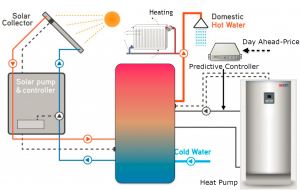CITIES Innovation Center conducts projects with the aim to increase the storage and flexibility capabilities of the energy system so that 100% renewable energy supplies are both possible and attractive.

Modeling a fully integrated energy system is a very complicated task. Tailored models for prediction are required for operations, forecasting, optimization, planning, simulation, and market participation among others. Each of these models must consider the complexities of its system, such as discrete decisions (e.g. where parts of the system can either be functional or not), nonlinear processes (gas and power flows, fuel-to-produced-energy, water-to-produced-energy), uncertainty (energy demand, energy cost, wind power generation, availability of generating units), and interaction of different actors (producers, consumers, market operators, physical and social events).
Furthermore, the models must facilitate different scales in time, space and degree of aggregation; from control of a building’s power consumption on the seconds scale, to the planning and development of a district heating and cooling network over fifty years. See the different projects and topics we work on here.
The vast number of operational possibilities (and energy vectors) within an integrated energy system, and the potential to switch rapidly between control frameworks, energy supply form, and countless other variables within an intelligent system necessitate a new approach to system planning. Operational strategies must be incorporated so that the sensitivity of planning outcomes to operational decisions (energy production portfolios, market structures, aggregation of resources) can be fully understood and accounted for.







